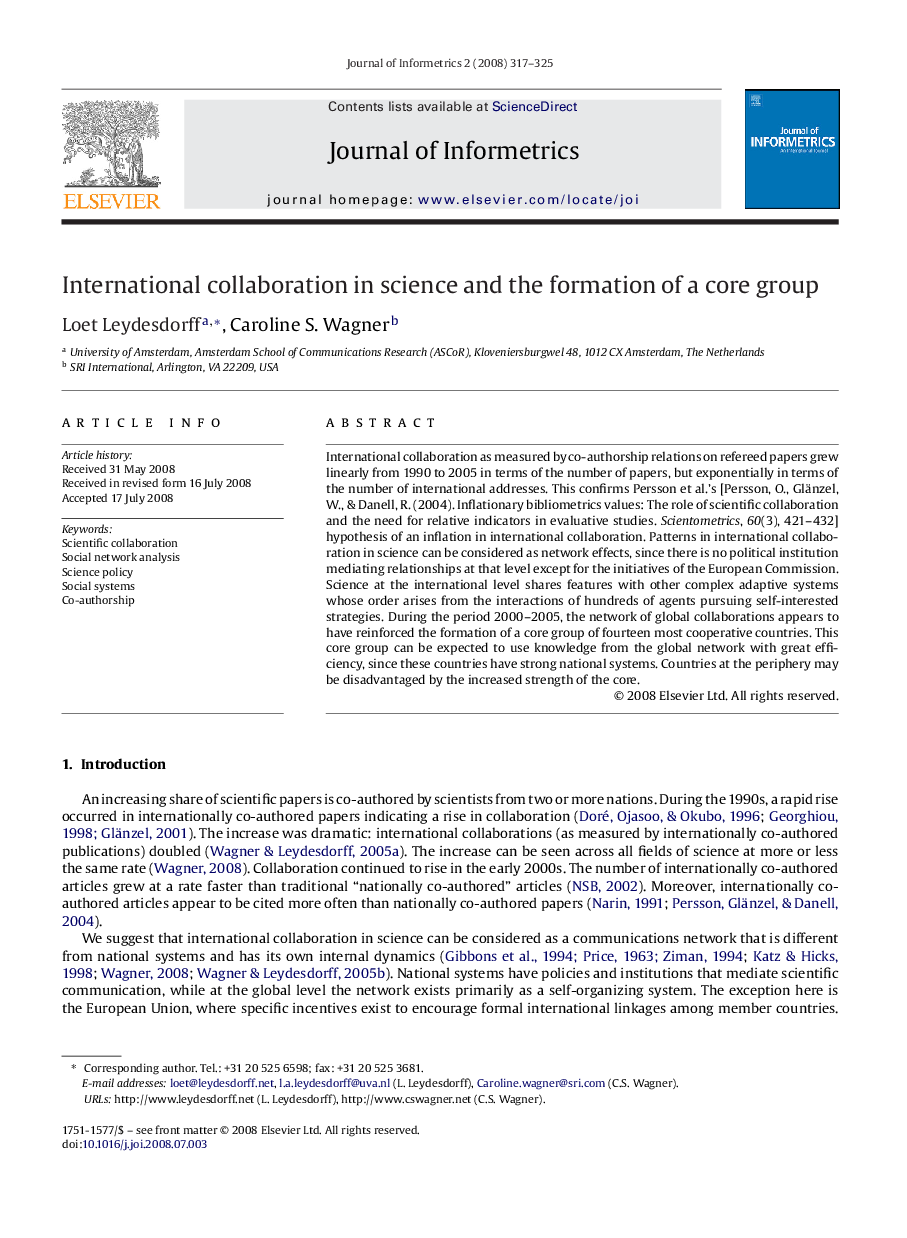| کد مقاله | کد نشریه | سال انتشار | مقاله انگلیسی | نسخه تمام متن |
|---|---|---|---|---|
| 523322 | 868296 | 2008 | 9 صفحه PDF | دانلود رایگان |

International collaboration as measured by co-authorship relations on refereed papers grew linearly from 1990 to 2005 in terms of the number of papers, but exponentially in terms of the number of international addresses. This confirms Persson et al.'s [Persson, O., Glänzel, W., & Danell, R. (2004). Inflationary bibliometrics values: The role of scientific collaboration and the need for relative indicators in evaluative studies. Scientometrics, 60(3), 421–432] hypothesis of an inflation in international collaboration. Patterns in international collaboration in science can be considered as network effects, since there is no political institution mediating relationships at that level except for the initiatives of the European Commission. Science at the international level shares features with other complex adaptive systems whose order arises from the interactions of hundreds of agents pursuing self-interested strategies. During the period 2000–2005, the network of global collaborations appears to have reinforced the formation of a core group of fourteen most cooperative countries. This core group can be expected to use knowledge from the global network with great efficiency, since these countries have strong national systems. Countries at the periphery may be disadvantaged by the increased strength of the core.
Journal: Journal of Informetrics - Volume 2, Issue 4, October 2008, Pages 317–325